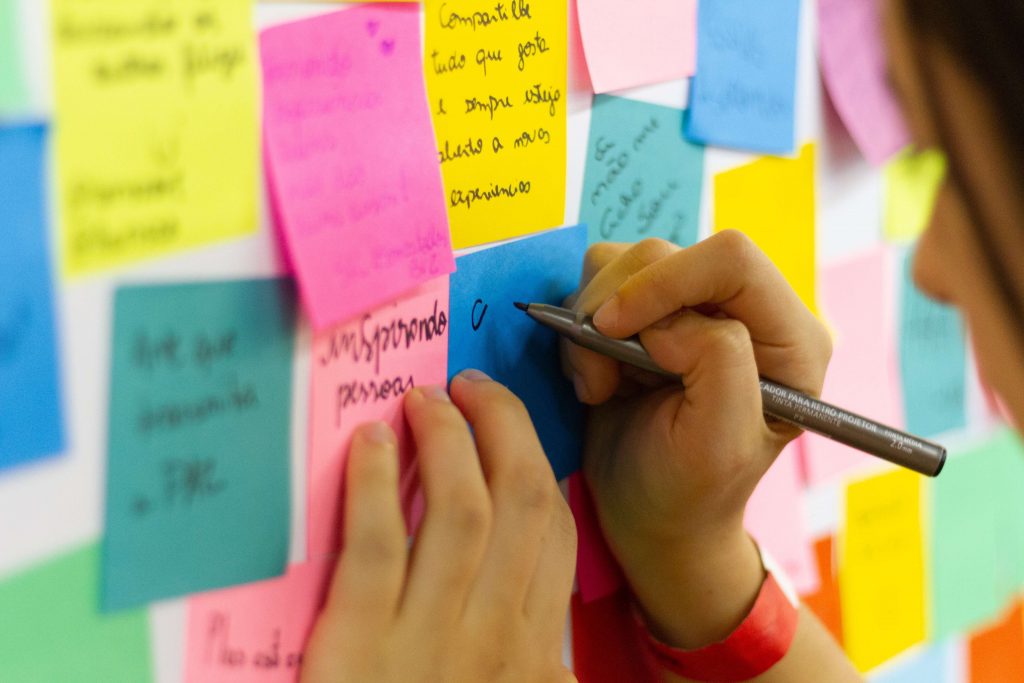We all have been in a situation where no matter how much time we have spent searching for a solution or thinking, we can’t figure a way out. Therefore, there are brainstorming sessions, it is a productive way of generating new different ideas by regrouping teams.
However, a question arises of how to conduct a successful brainstorming session?
Thus, in this article, I am going to explain to you steps on how to conduct a brainstorming session along with its techniques and benefits.
Table of Contents
What is Brainstorming? (All you must know about it)
Brainstorming is a creative technique that is used to generate ideas to solve clearly defined problems. A brainstorming session is a situation where a group of people come together in a positive environment and generate ideas without any inhibitions.
Brainstorming meeting is different from formal meetings because it lets people think more freely and it is more of an informal and fun discussion of ideas.

Why are brainstorming sessions important?
Brainstorming sessions are an effective way of critical thinking and letting out creative ideas. Many benefits of brainstorming sessions describe their importance. Following are the few from the bundle:
- It generates more ideas in a short period of time
- It helps avoid biases towards any person’s ideas
- It creates and promotes teamwork
- Allows people to think freely
- It sparks creativity
- Encourages critical thinking
Ground rules for an effective brainstorming session
If you are planning to organize a good brainstorming session keep in mind the following rules.
- Focus on quantity: The main goal of a brainstorming session is to generate countless ideas. No matter how basic, embarrassing or illogical they are more than quality, quantity is required.
- Encourage wild ideas: Embrace the “out-of-the-box” notion. Often the best ideas come from the wildest thoughts. Moreover, there is often not much difference between outrageous and brilliant.
- Defer judgment/criticism: Judgements and criticism (body language included) should be restrained in creative spaces. Being open to all ideas during brainstorming generates more unusual ideas.
- Build on the ideas of others: Try to say “and” rather than “but” to encourage inclusivity and positivity. It’s a process of association that expands on others’ notions.
- Be Visual: Use posts, diagrams to help bring ideas to life and let others visualize them.
- One conversation at a time: To arrive at a concrete result, it’s important to stay on track and acknowledge everyone’s idea.
Steps to conduct a brainstorming session
To organize a good and effective brainstorming session it is necessary to have the following ingredients in your process.
- A clear defined agenda
- A group of people
- A set time frame
- A facilitator to run the meeting
- Focus on team-building
Following are the steps on how to conduct a brainstorming session:
Step 1: Identify your problem
The initial step is to identify and define the problem on which the brainstorming session will be based. The problem should be specific so that better ideas can be generated.
Step 2: Set the agenda
Once you have identified your problem, it’s important to set an agenda. That includes the objectives of your problem, ground rules, and techniques (if required). If needed you can also set a time for your session in this step only.
Step 3: Choose the facilitator
A facilitator should be someone who can run the brainstorming session and can keep it on track. It should be someone who has experience in conducting such sessions and are unbiased. A facilitator can make sure everyone gets a chance and can introduce brainstorming techniques.
Step 4: Invite the right people
The session must include people of the company who are affected by the situation. It should include both experts and non-experts on the topic. To get a broad and creative range of ideas make sure to include diverse people.
Step 5: Generate ideas
This step is the start of the session, using the decided brainstorming methods you can generate ideas. Once, you have got all the ideas from everyone, start filtering them and find your way towards the solution.
Step 6: Close the session
Once you have generated all the ideas, it’s time to summarize the results and close the brainstorming session. You can follow up the closing session with a discussion of the next steps. Where you can decide the process of implementation and evaluation to gauge the feasibility of the ideas.
These are the basic few steps that are included in almost every session. Other steps can be included but it depends on the team. However, it is not necessary to follow exact steps, you can add or remove as per your requirement.
Brainstorming Techniques
The basic rules and steps are important to keep in mind when organizing a good brainstorming session. However, brainstorming techniques are equally important to conduct a good session.
Following are a few brainstorming techniques:
Mind-Mapping
The challenge in brainstorming sessions is to capture all thoughts and ideas swirling in the air. That is where mind-mapping helps, it aids you to jot down all the ideas and thoughts surrounding the main problem.
In another way, start with writing the main idea or problem you want to find a solution for at the centre of the whiteboard. Then branch it out with all thoughts/solutions from different participants. This way you will be able to gather all your thoughts on one platform and can look for all possible solutions from it.
Stepladder brainstorming
This is a good way of divulging ideas from all the teammates without getting intimidated or influenced by the loudest brainstormers of the group. It is suitable for medium-sized (5-15 members) teams, it also motivates introverts to speak out their thoughts.
The process starts with the facilitator introducing the topic and posing a question. After which all the members are dismissed from the room except for the two people. The remaining two members share their ideas, then the facilitator invites another member into the room. They then share their ideas before the previous two members divulge their ideas. This process goes on until everyone has shared their ideas. Further, they discuss all the ideas step by step.
Starbursting
This technique is similar to the reporter’s way of writing a news piece. Starbursting is all about “5W and H”, in this brainstorming method you have to think of what, why, who, when, where, and how aspects of an idea.
Place the main idea at the centre of a six-point star diagram and label all the points with 5WH questions. The next step is to develop all the questions about your idea. This method will help you explore different scenarios and roadblocks you didn’t consider before.
Brain-netting (Online Brainstorming)
This is a popular brainstorming technique in today’s modern workspace. It is suitable for remote working teams where they can have virtual brainstorming meetings. In this brain-netting technique, participants use Slack, or any project management tool to share ideas in real-time.
The way a team conducts the session varies from the team leaders asking questions and team members putting their responses. To use different techniques like rapid ideation, reverse brainstorming, and role storming.
Rapid Ideation
This brainstorming technique is best for teams who get sidetracked or dislike long meetings. This method maximizes productivity and results, the technique encourages team members to race against the clock and come up with as many ideas as they can. In other words, a time limit is set for participants under which they have to generate countless ideas
The important tip to remember is not to take themselves too seriously. Because the best ideas come from all the baseless, funny, and embarrassing stories.
Conclusion
Do you also conduct a brainstorming meeting with your team members? If yes, then let us know a few tips in some great tricks on how to run a brainstorming session for a team.
I hope otherwise, this article was useful and you are taking with yourself a handful amount of knowledge to conduct a good brainstorming meeting with your team.
Projectopia is the best project management tool for sharing real-time ideas with your team. It is specifically designed keeping in mind small business and freelancers’ requirements. It has various features you can look forward to like Client Management, Quotes & Estimations, Tasks Management, Support Tickets, and much more.
